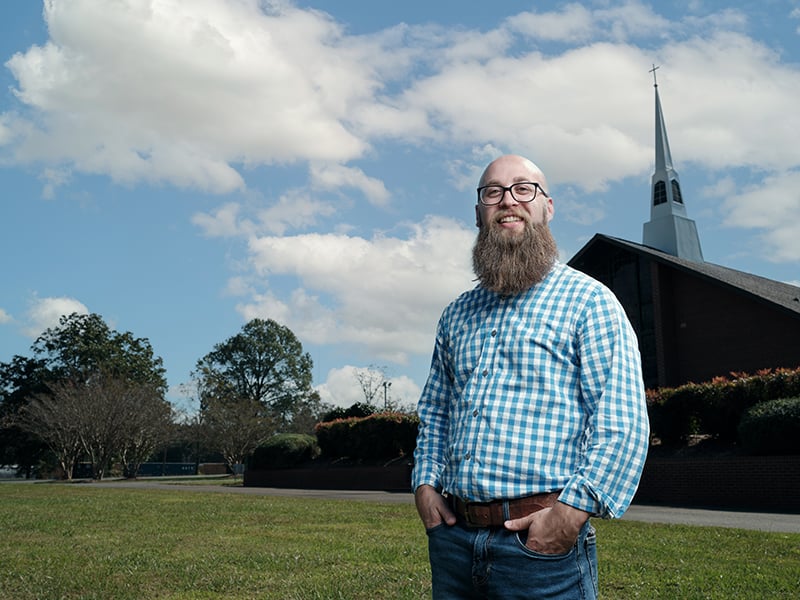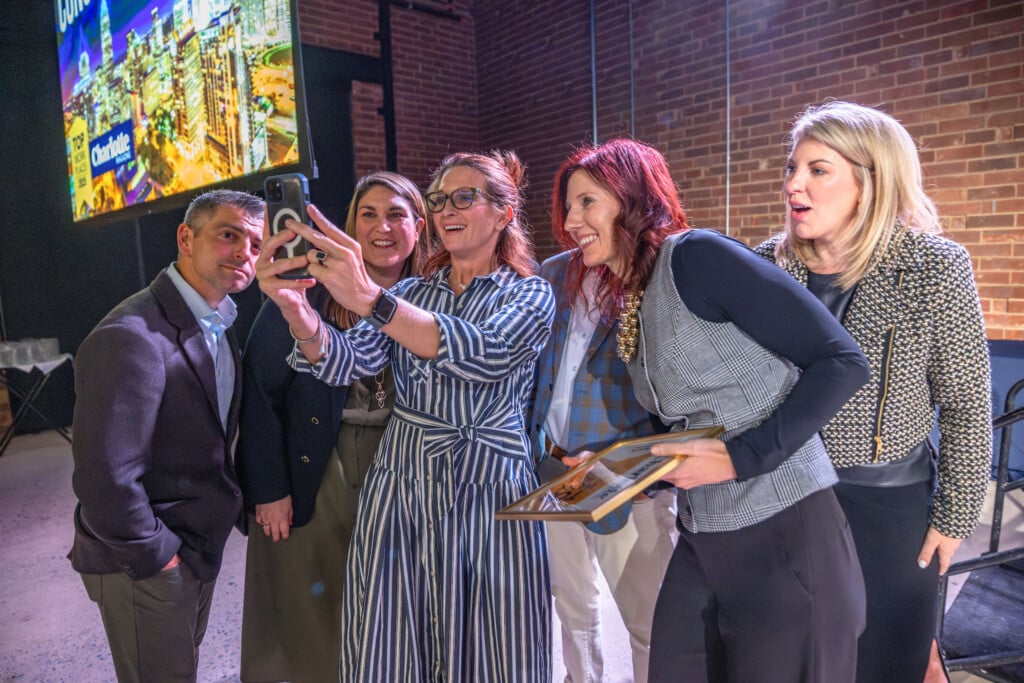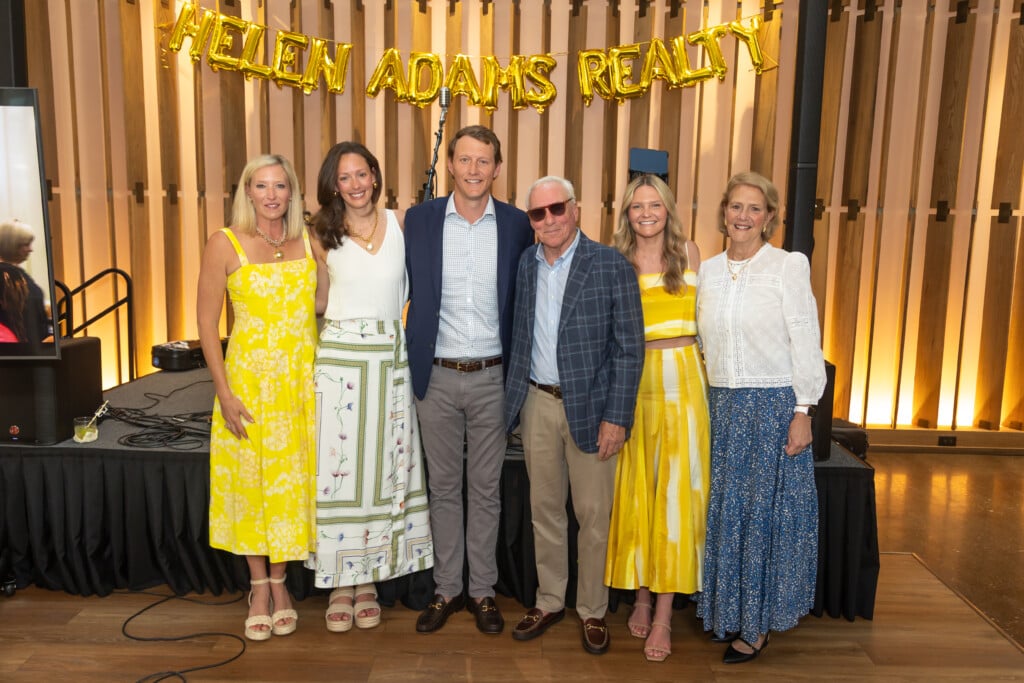Charlotte Looks to Churches’ Land to Address the Housing Crisis
Cities needing space for affordable housing are turning to the precious land owned by churches

When Newell Presbyterian Church opened its first sanctuary in 1892, the area was surrounded by dairy farms, cotton mills, and tobacco fields. Trees covered nearby hills. The city of Charlotte was miles away.
Today, Newell is part of fast-growing northeast Charlotte. Subdivisions and apartment complexes line Rocky River Road West. Another 650-home development is in the works nearby. Bustling commercial districts, as well as one of the state’s largest universities, are minutes away. But few changes have come to the church. A new sanctuary opened in 1979 with room for 200 members. Today, 50 might attend on a given Sunday. “We’ve grown small,” says pastor Matt Conner.
What the church does have is land. Alongside its three buildings is a grassy field on Old Concord Road that makes up half of its 10 acres. A few years ago, Conner and church leaders began to imagine new ways to use it. Conner wondered: Is just cutting the grass cutting it anymore?
They’ve found a way: They’re turning the empty field into a community of 50 affordable homes. Newell Presbyterian joins faith communities in Charlotte and elsewhere in finding new missions and opportunities for existing properties. For churches like Newell, it means needed revenue. For cities like Charlotte, it helps meet one of their biggest needs.
“It’s a win-win all across the board,” says City Council member LaWana Mayfield, the point person for the city’s Faith in Housing Initiative. A summit at the Charlotte Convention Center last spring drew more than 300 people from nearly 100 faith communities interested in helping tackle the city’s affordable housing deficit, now at 36,000. (That’s the number of homes affordable enough to ensure nobody pays more than 30% of their household income for shelter.)
Some churches were already doing it. St. Paul Baptist broke ground in 2016 on a development of 112 affordable homes in the Belmont neighborhood. Little Rock AME Zion, Mayfield Memorial Missionary Baptist, and The Park have since opened housing developments, as has the Catholic Diocese of Charlotte. Other churches have joined the effort. Covenant Presbyterian, for example, gave $2 million to help build a 185-unit project off Freedom Drive. Myers Park Presbyterian gave nearly $1 million toward a project in Grier Heights. Myers Park United Methodist gave $1 million toward 21 units at Caldwell Presbyterian.
“Here’s why what the churches are doing is important,” says Julie Porter, president of DreamKey Partners, a nonprofit that specializes in affordable housing. “It’s because land in Charlotte is scarce, and it’s becoming increasingly unaffordable for affordable housing developers. … The energy and interest of faith organizations has never been higher.”

Charlotte is among the leaders of a growing effort to build affordable housing on church land, says the Rev. John Cleghorn of Caldwell Presbyterian Church, which has 21 units on its property. Cleghorn, the church’s longtime pastor, has written a book about the movement.
Churches from New York to Los Angeles and Miami to Seattle have gotten into the affordable housing business. But Charlotte “is at the forefront of an emerging national movement of faith-based institutions building housing on their properties,” Caldwell Presbyterian pastor John Cleghorn wrote in an op-ed for The Charlotte Observer.
So why churches? Why now?
Since its founding in 1900, St. Paul Baptist had been a mainstay of Charlotte’s Brooklyn neighborhood. But in 1969, the city razed the neighborhood in the name of urban renewal. St. Paul was one of a dozen Black churches forced to relocate. It moved into a vacant sanctuary in the Belmont neighborhood and acquired more than three blocks’ worth of adjoining land.
Former pastor Gregory Moss began exploring ways to use it, and in 2016, the church broke ground on 112 units of senior and affordable housing. “This opportunity to provide affordable housing for persons who … would have been locked out is really a wonderful opportunity for us to lift up the Gospel mandate of Jesus Christ,” says Dr. Robert Scott, who became pastor shortly after the groundbreaking.
Like other churches, St. Paul had an increasingly rare commodity—affordable land. That availability is “the key to unlocking really good sites,” says Lee Cochran, a senior vice president at Laurel Street, a mixed-income housing developer that’s worked with St. Paul and other churches. Cochran says church involvement also can reduce local opposition to affordable housing, most of which is aimed at working people who might otherwise be priced out of the market.
“That’s the other place where the churches help,” Cochran says. “Having a neighborhood institution speak on behalf of (housing) blunts a lot of that.”
Two decades ago, Gallup found an average of 42% of U.S. adults attended religious services every week or almost every week. Now it’s 30%, a loss that COVID accelerated for some churches. Like Newell, many have seen their revenues shrink along with their congregations.
“We’re all sitting on … campuses built for the height of Christendom,” says Cleghorn. “Some churches in the near future will be talking about legacy as they consider how much longer it will be before they have to close their doors.”
Affordable housing can add to a church’s bottom line in several ways. Some churches sell their land. Others enter into long-term leases or even take ownership stakes. That’s what Little Rock AME did.
Its Community Development Corporation owns 67% of Varick on 7th, a 105-unit complex adjacent to its sanctuary, while Laurel Street owns the rest. Half the units rent for market rate; the other half go to tenants who pay no more than 30% of their income.
“We continue to find ways to remain viable and be of help to those we’re called to serve,” says Bishop Dwayne Walker, the church’s former longtime pastor, who oversaw the 7th Street development.
To finance projects, churches have found a medley of options, which include tax credits, grants, the city’s Housing Trust Fund, bank loans, and the North Carolina Housing Finance Agency. The formulas vary. “If you’ve seen one church housing deal,” Cleghorn says, “you’ve seen one church housing deal.” He’s written a book titled Building Belonging, scheduled for publication in October, about how churches build affordable housing.
Sometimes housing is just a start. Walker says Little Rock has an opportunity to add “wrap-around” services, like child care and workforce development, for residents and neighbors.
Dr. Peter Wherry remembers what brought the housing problem home for him. In 2012, the pastor of Mayfield Memorial Missionary Baptist Church met a family living on the street. Tasha and her daughter had survived a rape attempt and didn’t want to be separated from the girl’s father, Alvin. Though both adults worked, they couldn’t find housing they could afford or a shelter that would take the whole family. One day, Tasha collapsed at a bus stop, exhausted from working two jobs. She recovered. But the incident sparked a response from Wherry.
“I was just determined that something had to happen,” he recalls. “We had to make some kind of impact, some kind of contribution.”
He’d been talking to clergy friends that included the Rev. Rodney Sadler, now a professor at Union Theological Seminary, when they had a chance encounter with Mayor Vi Lyles, then a council member. “She said, ‘We need you clergy to help us because we need to do something about this affordable housing shortage,’” Wherry recalled. “I said, ‘What do you mean?’ She said, ‘Well, the city has money, but we don’t have land.’ I said, ‘We have land.’”
That started a yearslong process that included conversations with then-Charlotte housing director Pam Wideman and Porter, then president of the Charlotte-Mecklenburg Housing Partnership (renamed DreamKey in 2021), as well as neighbors in the Hidden Valley community, some of whom opposed the project. “I kept telling Julie, ‘God wants this done,’” Wherry says. “‘If the mission is just, it will succeed.’” Late last year, the church opened 51-unit Sugaree Place.
Not far down Sugar Creek Road, Masjid Ash-Shaheed (Mosque of the Witness) is considering housing on its 8 acres, says Nasif Majeed, a state lawmaker and chairman of the mosque’s development corporation.
Wherry calls houses of worship “the linchpin to solve our affordable housing problem. … Last check, there were 1,600 faith communities in Charlotte. Even if just a third of those did this, the housing crisis is over, at least right now.”
Two years ago, Karen Lee was looking in vain for a more affordable home. The retired tech support worker was worshiping at The Park one day in 2022 when she noticed an announcement about a new senior residential community adjacent to the church’s sanctuary on Beatties Ford Road. She was one of the first people to apply for a unit at Gilfield Park Apartments.
“I had been praying for about two years, and it took that long for the answer to the prayer,” says Lee, 65. “I’m just so thankful.”
Until last year, Herbert Wilson was living in a homeless shelter in Reading, Pennsylvania. A disabled Vietnam veteran, he suffers from PTSD. He received help from his local Department of Veterans Affairs but was nowhere near having a home of his own. Family members in Charlotte told him about Gilfield Park. He became one of its first residents in August 2023.
Now, Wilson lives in a comfortable, one-bedroom apartment with a big kitchen island and new appliances. Rows of family photos sit in the entry, on shelves lined with kente cloth. As with residents of other affordable housing projects, his rent is a percentage of the area median income, which in Charlotte is $106,000 for a family of four.
Wilson, 72, also sees his new home in divine terms. “Sometimes I wake up and think, Why me?” he says. “Then, Why not me? The Holy Spirit goes, ‘You’re my child.’”
In his book, Cleghorn writes that “the local church … stands at the convergence of its own existential crisis, a national cry for community, and a housing crisis that, directly or indirectly, shapes every American neighborhood.”
For churches like Newell Presbyterian, what started as a potential lifeline turned into a new mission. “If we have started this trying to avoid death, we have found new life and meaning and hope and clarity of vision and mission in the process,” Conner says. “That’s been a really transformative thing for us as a congregation. If it started as just trying to avoid dying, we’ve found a new sense of life in the process.”
JIM MORRILL is a longtime Charlotte political reporter who began his career covering the city for The Charlotte Observer in 1983.





